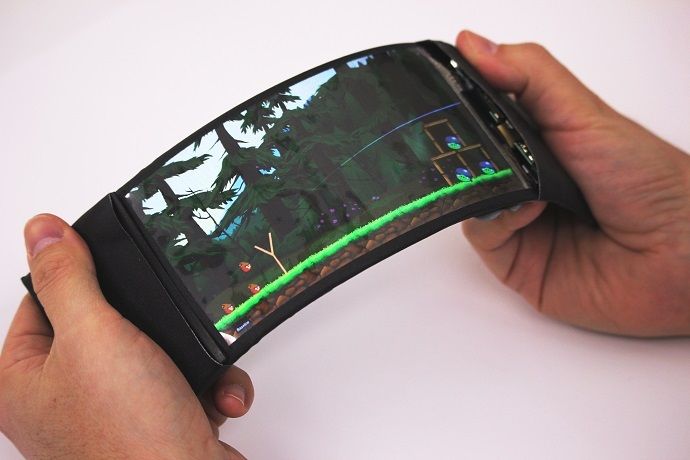World's first holographic flexible smartphone Holoflex
Thursday 12th of May 2016

Sharing is caring
To view the device, called Holoflex, you don't need those dumb plastic glasses you have to wear in the cinema to watch 3D movies, and it doesn't employ head tracking to tailor the appearance to the viewer, as seen in devices like the newer Nintendo 3DS.
Features of HoloFlex
• The device features a 1920x1080 full high-definition
Flexible Organic Light Emitting Diode touchscreen display.
Flexible Organic Light Emitting Diode touchscreen display.
• Images are rendered into 12-pixel wide circular blocks rendering
the full view of the 3D object from a particular viewpoint.
• It produces 160 x 104 resolution image that allows users to
inspect a 3D object from any angle simply by rotating the phone
• It is equipped with a bend sensor, which allows the user tobend the
phone as a means of moving objects along the z-axis of the display.
• It is powered by a 1.5 GHz Qualcomm Snapdragon 810 processor
and 2 GB of memory.
• It can also be used for holographic gaming. In a game such as
Angry Birds, users would be able to bend the side of the display
to pull the elastic rubber band that propels the bird. When the bird
flies across the screen, the holographic display makes the bird literally
pop out of the screen in the third dimension.
So how does it actually work? Well, when the device displays images, it renders them into 12-pixel wide circular blocks. Over the top of the display is a thin 3D-printed microlens array, consisting of over 16,000 fisheye lenses.
When the pixel blocks are viewed through the lens array, it makes the images look 3D to the viewer depending on their angle, when in fact they're actually only two-dimensional.
The one downside to this technique is it makes the appearance of the display decidedly more pixellated. Once the Full HD resolution is effectively down-sampled via the image-rendering process, you're left with a pretty chunky-looking 160 x 104 resolution image.
Vertegaal envisions a number of applications for the new functionality of the HoloFlex technology.
Sharing is caring
Related Post
Indian army officers get fake messages, advisory issued by PCDA(O)
Double-decker AC train to be launched on high-density routes
The first women chief minister of West Bengal Mamata Banerjee remains in power.
Union Government launches ePACE, INFRACON and up-Scaled INAM PRO for Road Transport Sector
Madhya Pradesh becomes First State to Shift Financial Year to Jan-Dec Format
Railway Minister Suresh Prabhu flags off TigerExpress